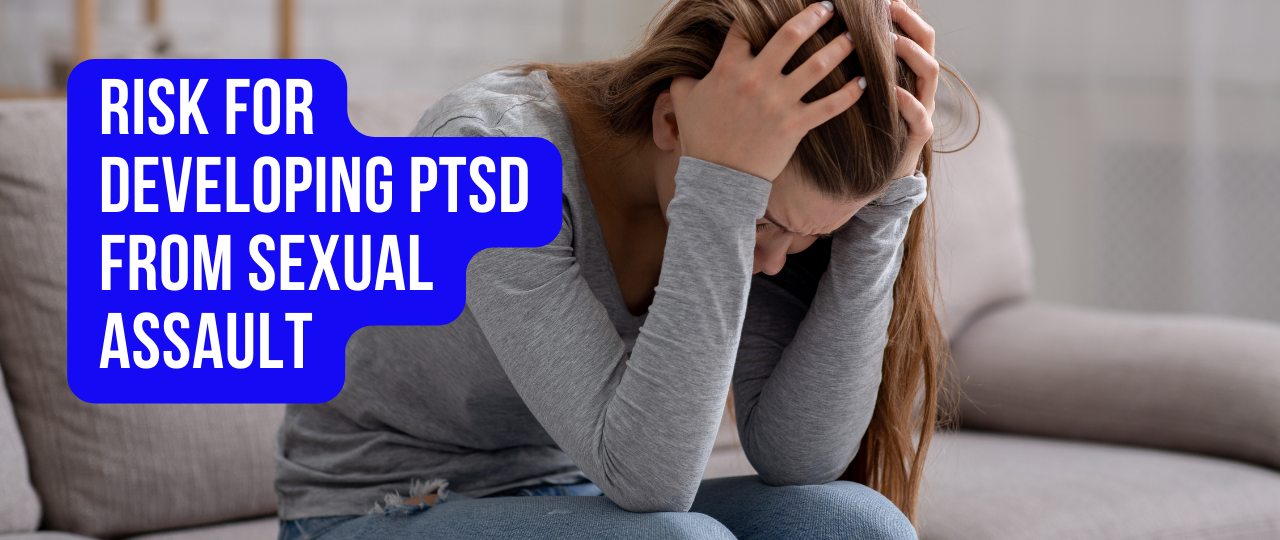It is not uncommon for a person to develop PTSD from rape or some other type of sexual assault. What is a sexual assault? The term "sexual assault" refers to a range of behaviors that involve unwanted sexual contact, such as sexual molestation or rape. Sexual assault unfortunately happens all too often in our society, and the experience of a sexual assault is connected with a range of serious mental health problems, such as depression and PTSD. So, what increases the likelihood that a sexual assault will happen? Two factors in particular that have been connected with increased risk for sexual assault are age and sex.
I have written articles over the years that I am a victim of Sexual Assault that happened 18 June 2004. I remember his name. I remember everything and yet, I can't do anything about it. Friends tell me to get over it (that is the worst thing you can tell someone!)
Trauma is one of the hardest things to get over. You can get triggered at anytime and when I tell my friends, they roll their eyes "OMG, not again...it isn't that deep, happened a long time ago" PTSD is awful. As I write this article I am triggered by another event that caused me PTSD and what helps me? Writing. As you know I started writing Erotica several years ago because something that is now considered PTSD triggered it. I didn't want to be dark anymore. I wanted to overcome the darkness thus I turned a "Vixen in a Salty Situation" to a Salty Vixen, negative into positive. Do I get triggered every so often? YES! I have gone to therapy and the therapist said writing erotica does help. So when I get triggered is when I write my best work. This article is for people who were Sexually Assaulted. It can happen to Men and Women.
Risk Factors for Sexual Assault
Certain people may be more likely to experience a sexual assault. Young women are a particular group of people that have been found to be at greatest risk for a sexual assault.
First sexual assaults has been found to occur most often between the ages of 16 to 20. In regard to sexual assault in the form of rape, rape is most frequently experienced among women aged 18 to 21, followed by women aged 22 to 24. In regard to other characteristics, rates of sexual assault do not seem to regularly differ across race/ethnicity or income level.
Risk for PTSD After a Sexual Assault
People have also looked at what factors increase the likelihood that PTSD and other psychological problems will develop following a sexual assault. Several of the factors that have been identified are:
- Presence or absence of psychological problems before the sexual assault
- The experience of frequent life stress
- The experience of a prior sexual assault or other traumatic experience
- A history of dissociation
- Severity of the sexual assault
Preventing Sexual Assault
Sexual assault occurs more often than you might think, especially among young women. Sexual assault is also connected with a number of negative consequences. However, sexual assault can be prevented. The National Sexual Violence Resource Center provides a number of tips on how you can prevent sexual assault, as well as resources for those who may be a victim of (or know a victim of) sexual assault.
Sources:
Brener, N.D., McMahon, P.M., Warren, C.W., & Douglas, K.A. (1999). Forced sexual intercourse and associated health-risk behaviors among female college students in the United States. Journal of Consulting and Clinical Psychology, 67, 252-259.
Briere, J., Woo, R., McRae, B., Foltz, J., & Sitzman, R. (1997). Lifetime victimization history, demographics, and clinical status in female psychiatric emergency room patients. The Journal of Nervous and Mental Disease, 185, 95-101.
Burnam, M.A., Stein, J.A., Golding, J.M., Siegel, J.M., Sorenson, S.B., Forsythe, A.B., & Telles, C.A. (1988). Sexual assault and mental disorders in a community population. Journal of Consulting and Clinical Psychology, 56, 843-850.
Foa, E.B., & Riggs, D.S. (1994). Posttraumatic stress disorder and rape. In R.S. Pynoos (Ed.), Posttraumatic stress disorder: A clinical review (pp. 133-163). Baltimore, MD: The Sidran Press.
Kilpatrick, D.G., Acierno, R., Resick, H.S., Saunders, B.E., & Best, C.L. (1997). A 2-year longitudinal analysis of the relationships between violent assault and substance use in women. Journal of Consulting and Clinical Psychology, 65, 834-847.
Perkins, C. (1997). Age patterns of victims of serious violent crimes. Bureau of Justice Statistics Special Report. Washington, DC: BJS (NCJ-162031).
Sorenson, S.B., Stein, J.A., Siegel, J.M., Golding, J.M., & Burnam, M.A. (1987). The prevalence of adult sexual assault: The Los Angeles Epidemiologic Catchment Area project. American Journal of Epidemiology, 126, 1154-1164.




















